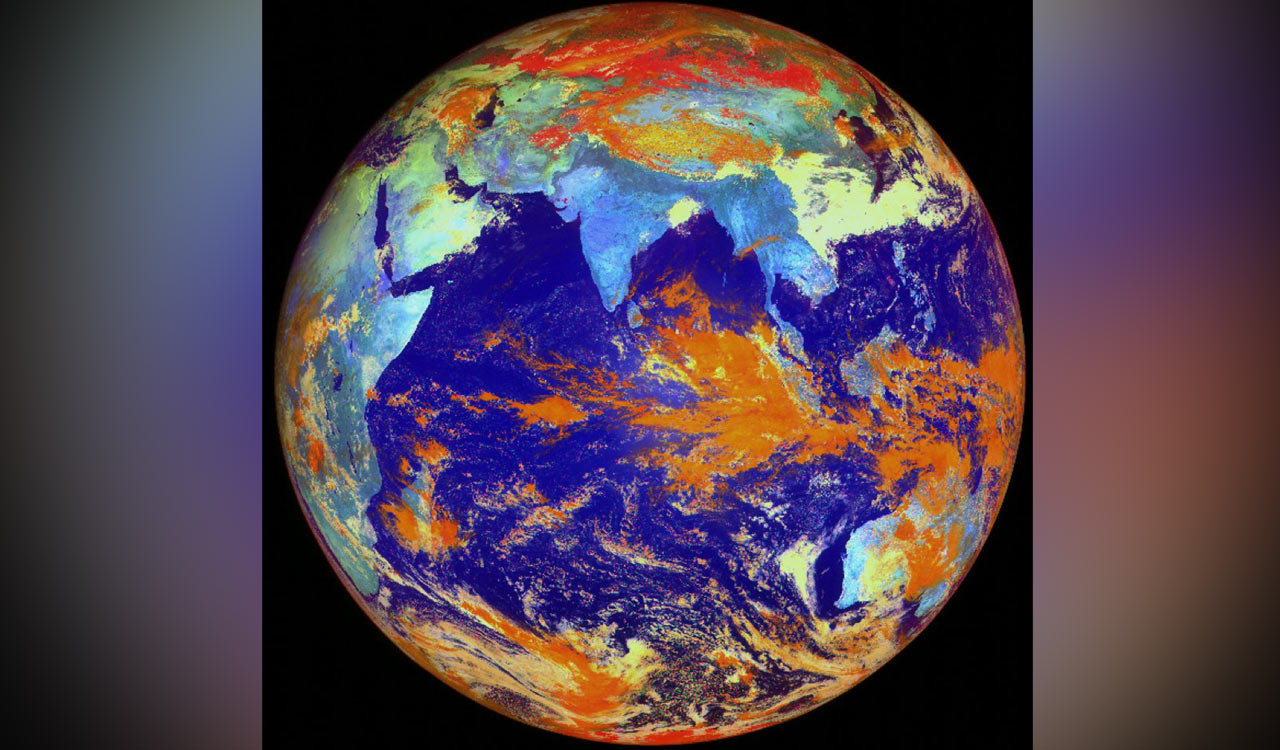The first images are processed and released at the Master Control Facility, Hassan in Karnataka
Published Date – 11 March 2024, 07:51 PM

Bengaluru: ISRO on Monday said its meteorological satellite INSAT-3DS has initiated earth imaging operations, and released the first set of images captured by the on-board payloads (6-channel Imager and 19-channel Sounder).
The Imager and Sounder payloads are similar to the ones flown on INSAT-3D and INSAT-3DR, but significant improvements have been achieved in radiometric accuracy, black body calibration, thermal management, and imaging throughput, among others.
The payloads were designed and developed at the Space Applications Centre (SAC), Ahmedabad. The first images are processed and released at the Master Control Facility, Hassan in Karnataka.
Noting that the 6-channel Imager equipment captures images of the earth’s surface and atmosphere across multiple spectral channels or wavelengths, it said the use of multiple channels allows for gathering information about various atmospheric and surface phenomena, such as clouds, aerosols, land surface temperature, vegetation health, and water vapour distribution.
INSAT-3DS Mission:
First glimpse of the beauty and complexity of Earth through modern Imager and Sounder payloads onboard INSAT-3DS.This data serves as crucial input for Indian scientists for mereological studies, weather forecasts, and understanding atmospheric dynamics.… pic.twitter.com/XVF1JviKAW
— ISRO (@isro) March 11, 2024
“The Imager could be configured to capture specific features of interest,” ISRO said.
The 19-channel Sounder captures radiation emitted by the earth’s atmosphere through channels carefully chosen to capture radiation emitted by different atmospheric constituents and properties like water vapour, ozone, carbon dioxide, and other gases, while others may be designed to measure temperature variations in different layers of the atmosphere, it added.
These payloads generate over 40 geophysical data products such as Sea Surface Temperature, Rainfall (precipitation) Products, Land Surface Temperature, Fog Intensity, Outgoing Longwave Radiation, Atmospheric Motion Vectors, High-Resolution Winds, Upper Tropospheric Humidity, Cloud Properties, Smoke, Fire, Mean Surface Pressure, Temperature Profiles, Water Vapor Profiles, Surface Skin Temperature and Total Ozone for the user community.
The data collected derives information about the vertical structure of the atmosphere, crucial for weather forecasting, climate monitoring, and understanding atmospheric processes, ISRO said.
The space agency said after completing orbit-raising operations, the satellite, launched on February 17, reached the designated geostationary slot for the In Orbit Testing (IOT) on February 28.
IOT of the Satellite Communications was conducted between February 29 and March 3. As part of Meteorological Payload IOT, the first session of imaging for Imager and Sounder payloads was carried out on March seven.
The payload parameters are found to be nominal, complying with payload specifications, it said, adding, thus, all the payloads of INSAT-3DS have been tested to perform nominally.




